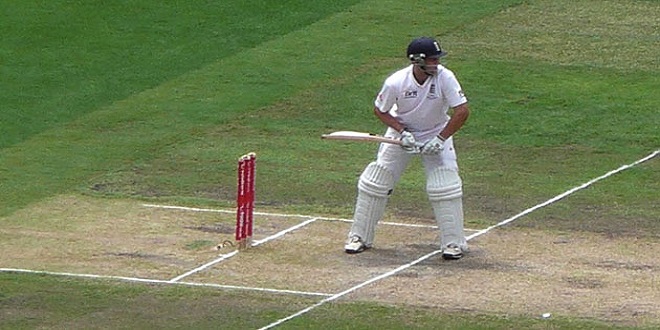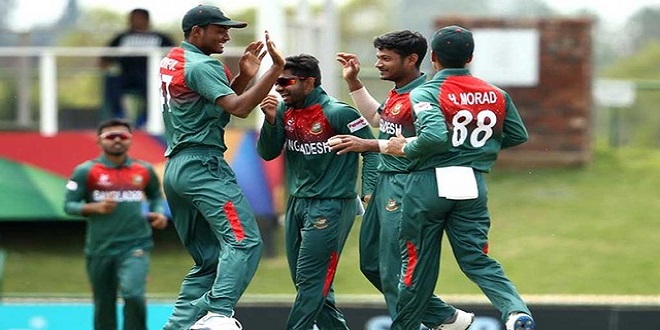Getting to Grips with the Basics of Cricket

Introducing the Players
Cricket is a game where two teams of 11 players square-off against each other. Every player gets the chance to bat and to field, and, in theory, the team captain can call on everyone to bowl. But players tend to specialize in one of three roles: As batsmen, bowlers or wicket-keepers:
- Batsmen: These players are adept at defending their stumps from being hit by the cricket ball and at hitting the ball with their bat to score runs. Everyone in the team has to bat – though not every player can call himself a batsman!
- Bowlers: These players deliver the ball in the direction of the stumps and their raison d’être is to dismiss the batsman. The team captain decides which players get to bowl.
- Wicket-keepers: A wicket-keeper stands behind the batsman’s stumps when the bowler delivers the ball. Clad in a giant pair of gloves, this player’s main jobs are to catch the ball when it comes in his direction as most balls will – and to gather the ball when it has been thrown by fielders. Each team has only one wicket-keeper, but he is the hub of the team when in the field.
- Fielders: Everyone gets to field. Fielders are there to support the bowlers in their quest to dismiss the batsmen. They do this by taking catches and running out the batsmen. See the section ‘Dismissing the Batsmen’ later in this chapter for more on modes of dismissal. Fielders also have to chase, gather, and return the ball to the bowler or wicketkeeper should the batsman hit it with his bat.
Some players are good at multi-tasking; they can bat and bowl, or bat and keep wicket to a decent standard. In cricket speak these players are called all-rounder’s and, no, that’s not because they have enjoyed too many sumptuous cricket teas and developed a bit of girth.
Taking in the Field of Play
Unlike most other sports, no rule governs the exact size or shape of a cricket field (although strict rules exist for the pitch portion of the field where the bowler delivers the ball to the batsmen: See ‘Understanding the importance of the pitch’ later in this chapter). Roughly speaking most cricket fields are oval, but some can be more like circles or even squares. The size can vary dramatically. Some cricket grounds like the Oval in London, UK, or Melbourne Cricket Ground in Australia are huge expanses of turf stretching in all directions for a hundred metros or more. Other grounds are much more daddy affairs, with the boundary merely a stone’s throw away from the pitch.
The boundary is the line marking the limit of the cricket field. If the ball is hit over this line without it bouncing then six runs are scored. If the ball does bounce on its way to crossing the boundary then four runs are scored. See ‘Understanding the Scoring System’ later in this chapter for more on scoring in cricket.
Understanding the importance of the pitch
The pitch is at the center of the playing area and is where most of the action takes place (see Figure 2-1). The pitch is where the ball is delivered by the bowler to the batsman, who then tries to defend the stumps from being hit by the ball or executes aggressive scoring shots: See Chapter 5 for the ins and outs of batting.
Protecting the pitch
The condition of the pitch can have a crucial impact on the result of the match. If conditions favour the bowlers – lots of grass or uneven bounce – then the match may be over quickly because the batting side fined it hard to score runs and stop the ball hitting their stumps.
Grounds men work to get their pitches just right. They try to make sure that any pitch offers a little something for both the batting and bowling sides. To achieve this they sometimes use a covering over the pitch area, keeping the elements off the pitch. The grounds men may remove the covering now and then to roll the pitch or to water it.
Talking Stumps and Bails
The stumps and bails are essential pieces of cricket kit, a bit like goalposts in soccer. Without stumps and bails you can’t have a proper match. A stump is a long straight piece of wood which is hammered into the ground. Stumps come in two sets of three, located at opposite ends of the cricket pitch. On top of each set of stumps rest two bails. Bails are little pieces of wood which sit in the grooves at the top end of stumps, and for small objects, their role in a cricket match is surprisingly large.
In order for a player to be bowled, run-out or stumped – see ‘Dismissing the Batsmen’ later in this chapter for more on modes of dismissal – the bails have to be dislodged from the top of the stumps, by contact with the ball. If the ball makes contact with the stumps and the bails are not knocked off then no dismissal takes place. However, if just one bail is dislodged then the batsman is dismissed.
Summary
A batsman is allowed to retire. This doesn’t mean that he suddenly ends up spending an inordinate amount of time in the garden. A player retiring simply means that he has had enough for that innings. He may want to rest or give another team member a chance to bat. A player who retires is deemed to be dismissed and is not allowed to return to bat again in that innings. However, a player who retires hurt – say after being struck by the ball or pulling a muscle – is allowed to return to bat at a later stage of the innings.
With its comprehensive coverage and detailed analysis, it offers a valuable resource for trend enthusiasts. By providing accurate and timely information, Trendsactually keeps its audience ahead of the curve. Whether you’re a fashionista, a tech enthusiast, or simply someone who appreciates staying current, Trendsactually has something for everyone.



